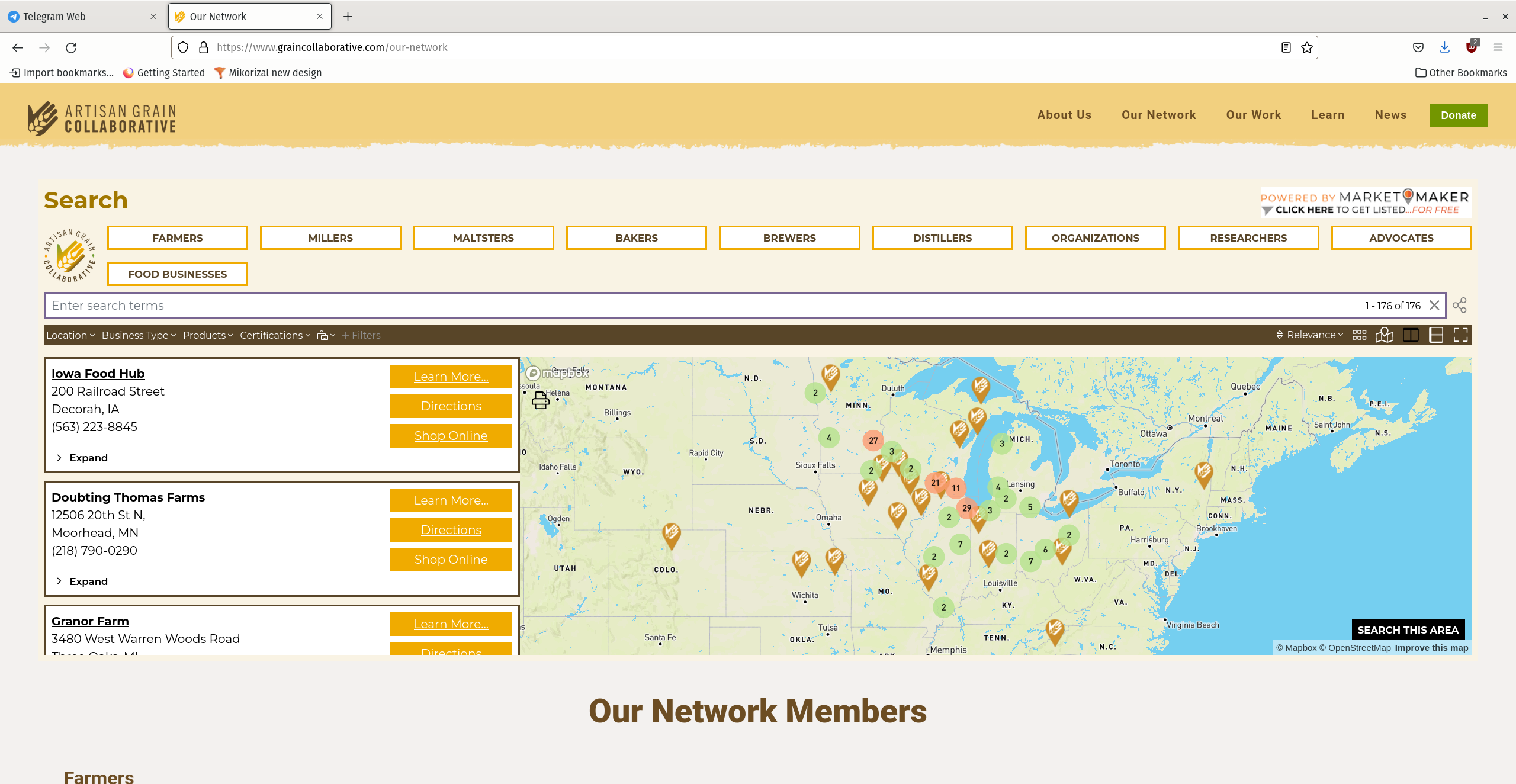Grain chains as economic networks
We've been seeing grain chains developing in our region, the Driftless Zone. We belong to one grain chain that we met via Meadowlark Organics farm and mill where we get flour for baking. Here's a map of the network they belong to:

and a link to the network website: https://www.graincollaborative.com/our-network
And here's The Crumb, a monthly newsletter from Meadowlark's grain chain network.
I just learned yesterday about a software company called GrainChain. We think it is proprietary code so we won't touch it, but it's a sign of the times.
Grain chains are economic networks that organize:
* farms that grow the grain,
* mills that grind it into flour,
* bakers who turn the flour into dough and bake it into bread,
* and stores, cafes, and families who serve it to people to eat.
In our case, Meadowlark grows the grain and mills the flour, and told us about the Grain Collaborative network and the Crumb newsletter.
One reason grain chains form into networks rather than the farm selling into open market, the baker buying from and selling to the open market, etc, is that each product in the chain works best when fresh, and each agent in the network wants to have reliable deliveries of high-quality fresh products.
Similar reasons impel other economic networks to form. In many economic sectors, agents (organizations and individuals) tend to deal with known, reliable trading partners rather than open markets. The fabled “invisible hand of the free market” is often a fable rather than a reality.